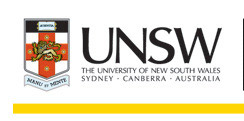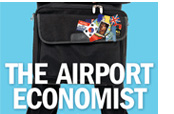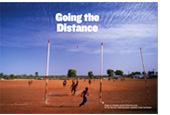Australian exporters survive higher dollar, carbon tax
By Tim Harcourt*
It was quite a day when Ford announced the end of its operations in Geelong and Broadmeadows. What was amazing was the massive saturation of media of reaction. I think we must have heard from a galaxy of politicians – ministers, opposition leaders, premiers, deputy premiers, mayors, deputy mayors. Then we heard from a massive number of journalists, mainly from the Canberra press gallery, a few market economists and then onto to the retired politician-commentators. Finally we heard from car industry analysts and the odd economist or two who have actually worked on the car industry (like Nicholas Gruen) or manufacturing in general (like Goran Roos).
But from all the noise we heard that the main reasons for the Ford closure were “the high dollar, labour costs and the carbon tax.” Despite the complicated reasons behind Ford’s decision, related to strategic issues in the global car industry (that we foreshadowed in the Bracks Review into the automotive sector) they were drowned out by the chorus of high dollar, carbon tax and labour costs. And now somehow they are assumed to be fact, as the actual reasons for the automotive sector’s woes – and Australian manufacturing’s in general – despite any available evidence in support.
The Ford closure led me to ask if these reasons apply in general to the Australian export sector in general – particularly in manufacturing.
Fortunately, the DHL Export Barometer, that regularly takes pulse of Australia’s exporter community can give us a good steer of the long terms issues affecting their businesses, and any global risks and opportunities that are on the horizon. The report also give us a feel of how a major issue – like the exchange rate or policy change – may play out in the medium term. Some of the data in the survey makes interesting reading in light of the headlines we may hear according to conventional wisdom.
Firstly, on the exchange rate we often hear that “The high dollar is killing manufacturing exporters.” The Barometer asks this question regularly and has found the impact of the rising dollar to be variable across sectors. However it is agricultural exporters and domestic tourism that are the most adversely affected. These sectors don’t have the assistance of high commodity prices like mining, or imported components like manufacturers. In fact, according to the Barometer 74 per cent of all exporters now import, compared to only 35 per cent two years ago.
Secondly, we hear that “Australia is a ‘two-speed’ or ‘patch work’ economy”. Yet in this Barometer it is the mining sector that has had the biggest drop in confidence as super-profits wear off to become just plain old profits. In fact, manufacturing exporters have the highest profit expectations of all sectors with 52 per cent expecting and increase this year compared to 42 per cent of mining exporters. From the survey results, it seems that reports of the death of manufacturing have clearly been exaggerated.
Thirdly, we hear that “It’s all about China.” The surveys showed China is important to exporters but so are South East Asia, Middle East, India and North America. Even New Zealand was regarded as important export market as exporting small and medium sized enterprises (SMEs) could use it as a nursery or ‘test bed’ for the products and services. On the competition side exporters also saw China, USA, India and New Zealand as their greatest competitive threats.
Fourthly we hear that “the carbon tax is killing industry”. This was a big fear when 61 per cent last year thought the carbon tax would adversely their business. In 2013, 58 per cents said it had “no impact”. Perhaps for a majority of exporters, the carbon tax is like the dog that barked but did not bite.
Fifthly, we hear that we should go “All the way with FTAs”. Most exporters think free trade agreements are useful to grow their businesses, but so are export market development grants (EMDG) and government assistance off shore through Austrade offices.
Finally, we hear that “Setting the federal election date gives us ‘certainty’”. In reality it makes very little difference. 67 per cent said the setting of 14 September had “no impact” on their business plans.
So when you come to analyse the Ford decision or any other major policy change in any sector of the economy. Have a close look at the data and get a feel to what the businesses, workers and communities are saying. As the reasons may be a bit more complex than what might first appear on a quick door stop when the TV cameras first appear.
*Tim Harcourt is the JW Nevile Fellow in Economics at the Australian School of Business, UNSW and author of The Airport Economist: www.theairporteconomist.com
He also was the international economic adviser to the Bracks Review of Australia’s Automotive Industry













No Comments so far ↓
Comments are closed.